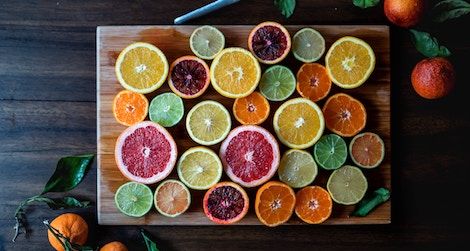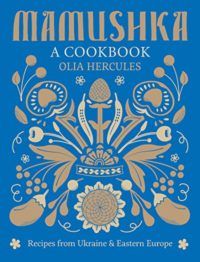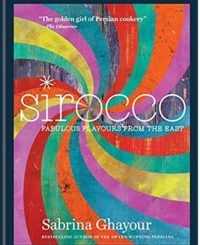
New Year, New Palate: Cookbooks to Kickstart Cooking Resolutions
Do you have cooking resolutions for 2019? I do. Last year, I set myself a challenge: cook 100 recipes I’d never cooked before. The Carnegie Library system was fundamental in accomplishing this task; I have a lot of cookbooks, but I don’t have that many, and besides, the fun in a challenge like this is going places I’ve never been before and might never go again (looking at you weird leftovers that sat in the fridge for two weeks and didn’t even get emptied out of the Tupperware before they got trashed).
I’m going for 100 more this year, and I’ll be keeping a weekly log of my adventures over on another interweb space as well as posting pictures of each recipe, be it a rousing success or epic failure, on instagram (@irate_corvus). I’ve purchased a few new books, and hauled a bunch more home from the library, in preparation for the calendar rollover. I thought I’d share some of them with those of you who have resolved to add a little more variety to your own home repertoires in 2019.
Some of the books I choose tend toward the simple while others aim for more complex dishes. Some are meant for home chefs on tight schedules while others explore more time-consuming recipes that require more expensive ingredients. One of the many beauties of the massive variety of word cuisines, and the access we now have to them, is the ability to pick and choose which is right for you on a given occasion. Also keep in mind that if there’s a dish that looks delicious, but an ingredient you or someone in your family or friend group doesn’t like or has an allergy to, most recipes can be modified. My kids, for example, are still learning to appreciate spice, so if a sauce has some heat, I make and keep it separate, or swap out the type of pepper. I have an allergy to pineapple, so I sub in orange or grapefruit. Many of the reputable cooking sites will have substitution suggestions. Or you can channel your inner chef and wing it.
Depending on where you live, some of the regional and/or speciality ingredients may be difficult to find. Amazon has a fair number of the non-perishable ones and even some of the less delicate perishables. If you prefer to avoid Amazon, you can use them as a search engine for third party purveyors and then see if those purveyors have their own websites. There are places to get fruits and veggies, etc., but expect to pay for overnight or two day shipping. Know going in some of the speciality ingredients themselves are expensive but that if it’s out of your budget, you can probably find a more affordable substitute. Your dish may not taste exactly the same but you’re still trying something new.
And so, without further ado, I present to you, in no particular order, cookbooks to kickstart your your cooking resolutions:
L.A. Son: My Life, My City, My Food by Roy Choi, Tien Nguyen, Natasha Phan, and Bobby Fisher
by Roy Choi, Tien Nguyen, Natasha Phan, and Bobby Fisher
Both cookbook and memoir, Choi leads readers through his own history as, first, a young Korean immigrant to L.A., then a troubled young man who almost took the wrong path, only to be saved by food. Food of all sorts, food with which he became obsessed. How he came to be a classically trained chef and worked for years in fine dining, then struck out on his own, making his mark on the American culinary scene: combining, fusing, creating a reflection of who he is, of his America, in every dish. This book is alive with what it is to be American. Oh, and the two pounds of carne aside (pg 109) I made for my family of four disappeared in one sitting.
Simple by Yotam Ottolenghi, Tara Wigley, Esme Howarth, and Jonathan LoVekin
My husband won this book in his family’s Chanukah White Elephant, which is kind of hilarious because he doesn’t cook. He can, he just doesn’t. I was pretty thrilled, however, because I had seen it around and I was quite keen to try, well…pretty much everything. I’m a big fan of Mediterranean skewed dishes because they tend to be a little healthier and they suit my tastes. They tend to be a little light on meat for my husband and my son, who are essentially large cats in the dietary department. The recipes in Ottolenghi Simple, however, contain enough meat to satisfy them (the best meatballs I have ever made are the Ricotta Oregano ones on pg. 221) while keeping my more health-conscious…conscience satisfied. The philosophy of the book is S (short on time) I (ingredients: 10 or fewer) M (make ahead) P (pantry-led) L (lazy-day dishes) E (easier than you think). I’ve only made the meatballs thus far, but the recipe met all of the criteria except for “short on time;” all told, it took about an hour, though a lot of that was simmering, allowing me to pay minimal attention and work on another project.
Friday Night Feast by Jamie Oliver
Expect the recipes in Jamie’s Friday Night Feast to be bigger, more expensive, more time consuming projects: it is right there in the title. I’m not usually an Oliver disciple, but this book looked fun because contained within are favorite family dishes from various celebrities—again, usually not a gimmick that would grab me but the who caught my attention, as it included Mark Hamill (Roast Sirloin & Yorkshire Puddings), Joanna Lumley (Aubergine Kuzi Topped with Sultanas and Almonds), Warwick Davis (Steak and Stilton Pie), Simon Pegg (Lamb Tagine with Homemade Flatbreads & Harissa Yoghurt), and David Tennant (Croatian-Style Cuttlefish Risotto with Chili-Spiked Parsley Dill, of which there is a video of Oliver and Tenant making online that is quite hilarious). I figured this one would be fun to have for those rare occasions when we do have people over. Or for some truly epic fails because I, for one, have never attempted to deal with cuttlefish before but I suppose there’s always a first time and if the Doctor can do it, then so can I.
 A Meatloaf in Every Oven: Two Chatty Cooks, One Iconic Dish, and Dozens of Recipes – From Mom’s to Mario Batali’s by Frank Bruni, Jennifer Steinhauer, and Marilyn Pollack Naron
A Meatloaf in Every Oven: Two Chatty Cooks, One Iconic Dish, and Dozens of Recipes – From Mom’s to Mario Batali’s by Frank Bruni, Jennifer Steinhauer, and Marilyn Pollack Naron
Meatloaf is underrated. I know, I know. We all complained about it as kids. But as adults with jobs and our own children and schedules and the inevitable-last minute disaster, we can’t afford to ignore something so versatile. It can be made out of any type of ground meat or combination thereof. You can put pretty much anything you want inside of it. No matter what your comfort cuisine is, you can flavor your loaf accordingly. You can prepare it ahead of time and cook it when you get home. You can cook it ahead of time and reheat it when you get home. It doesn’t take any longer to make a double recipe and then, not only do you have dinner but lunch for several days thereafter or a second dinner for later in the week. You can bake it, make it on the stovetop, or cook it in the slow cooker. You can make it in the microwave if you have to. If you’re doing a meal train for someone else, it’s easy for them to finish up and they’ll have leftovers. It’s cheap! It’s easy! You can top it was ketchup or accompany it with a fennel, celery root, lemon, and Pecorino salad (pg 224). My favorite incarnation is from Aarti Sequeira’s Aarti Paarti: An American Kitchen With An Indian Soul (pg. 212) but I’m trying the Swedish Meatball Loaf (pg. 77) from Every Oven this week because the seventy billion people who go to Ikea can’t be wrong.
 Mamushka: Recipes from Ukraine and Eastern Europe by Olia Hercules
Mamushka: Recipes from Ukraine and Eastern Europe by Olia Hercules
My family is, for the most part, Polish and Russian. There’s a little Austrian thrown in, and a few folks who got stuck in that sliver on the map that kept going back and forth between Poland and Russia; it messes with my percentages but not my overall cultural DNA. Unlike the majority of Jewish Americans, there’s also a branch of my family that went from Russia to Cuba before getting booted by Castro and ending up here—and it’s unclear as to whether my branch of the tree is directly related to that branch or just adjacent on the trunk. My great-grandmother was born in Atlanta, Georgia, which is also highly unusual and means I should probably learn how to make biscuits.
Regardless, I grew up eating, at least on Jewish holidays, what was purported to be traditional Eastern European Jewish food. It was a thing and to be honest, I did not like it, Sam I am.
Since moving to Pittsburgh, I’ve had Polish and Russian food at restaurants. They were…not what I ate at home. Part of this is likely rooted in Old-World Jewish communities being kept apart both by choice and by anti-Semitism. These ghettos were often on the poorer side of the economic spectrum and made do with what they could get. Their cooking was also restricted by the laws of kashrut.
It’s likely there are other factors which contributed to my childhood experiences but we won’t go into those here.
All of that to say, part of my 100 recipe mission this year is to rediscover my own culinary heritage. No liver, though. I went to nursing school. I know what they’re for.
The Immigrant Cookbook: Recipes that Make America Great collected and edited by Leyla Moushabeck
El Salvador. Malaysia. Senegal. St. Lucia. Israel. Palestine. Lebanon. Hungary. Iran. Peru. Chefs have come from all of these places and more to the United States to live their dream of bringing a beloved cuisine to the larger world. To you. Do them the honor of giving the products of their hearts and souls a try.
Most of the recipes in this book are relatively simple, “home” creations, so go crazy. Also, there are desserts and, just like you don’t really know a language until you can curse like a sailor, you don’t know a cuisine until you can sugar your guests up properly (hello, Sri Lankan True Love Cake pg. 158).
 Sirocco: Fabulous Flavors From the Middle East by Sabrina Ghayour
Sirocco: Fabulous Flavors From the Middle East by Sabrina Ghayour
Look, everyone has a type, okay? Mine happens to be the Middle East. Ghayour’s book stood out when I was flipping through because there’s a recipe for bacon pitas (pg. 31) and pork isn’t something I’ve seen a lot in recipes from this region (it’s prohibited by both Judaism and Islam. The recipe doesn’t specify pork, though neither does it specify non—where typically, if I have seen bacon in recipes from this region, it’s been turkey or lamb, which can be made kosher or halal). Also of note are multiple cheese creations (including Feta Bites with Preserved Lemon Jam on pg. 75 and Pan-Fried Halloumi with Pomegranate Seeds (which you can buy already hulled), pea Shoots & Pomegranate Molasses on pg 82) and a Preserved Lemon Martini on pg. 54, which I can 100% see myself drinking on the beach in Tel Aviv. There are also great looking spins on classics such as latkes with chickpeas added in, salmon tartare, and a Greek Salad with Basmati Rice (pg. 131).
Rustica: A Return to Spanish Home Cooking by Frank Camorra and Richard Cornish
I’ve been to Spain a couple of times. It was, in fact, the first place I ever had fried calamari. I remember the event vividly: I was wandering around Madrid with a group of friends from the city and we got hungry so we found a sandwich stand. They wanted me to try one of their favorites; I asked what it was. They told me it was “camarones fritos.” Fried shrimp. I have never not been down for friend shrimp. The texture was a little different as was the taste but whatevs. I was in Spain. You try things and maybe they taste a little different.
It wasn’t until we were halfway done that one of them looked at me with huge eyes and said, “Not camarones,” and mimed something with lots of legs. “Octopus,” I asked. “Pulpo. No.” He mimed again. One of the other group members thought for a second and then said, “No camarones. Calamaris.”
So close.
It was pretty damn good squid, so I kept eating.
I had a lot of food adventures in Spain. That said, I don’t remember eating the marinated shark or octopus terrine Rustica suggests are home dishes. Of course the family I stayed with were immigrants from Mexico and Argentina, so…maybe they eat those in other houses or other regions? I did become familiar with jarred white asparagus slathered in mayo (don’t you dare judge until you try. I’ve made it since whenever I can find white asparagus). I’m curious to delve deeper into this book and see what there is though I’m not sure I’ll be handling octopus at home. There’s a Bacalao Fresco en Refrito (pg. 236) that looks pretty damn amazing though and it seems like the perfect time of year for an Arrai Sopa (pg. 265). There are also some amazing cookies scattered amidst entrées and veggies and I’ve never met a cookie I didn’t want to try at least once. Or, for that matter, an apple tart…
Come. Join me. Cook. Try something you’ve never tried before. You may love it. You may hate it. But at least you can say you’ve given it a shot. Maybe whatever it is will be your Spanish fried calamari sandwich.




 A Meatloaf in Every Oven
A Meatloaf in Every Oven Mamushka: Recipes from Ukraine and Eastern Europe
Mamushka: Recipes from Ukraine and Eastern Europe Sirocco: Fabulous Flavors From the Middle East
Sirocco: Fabulous Flavors From the Middle East






